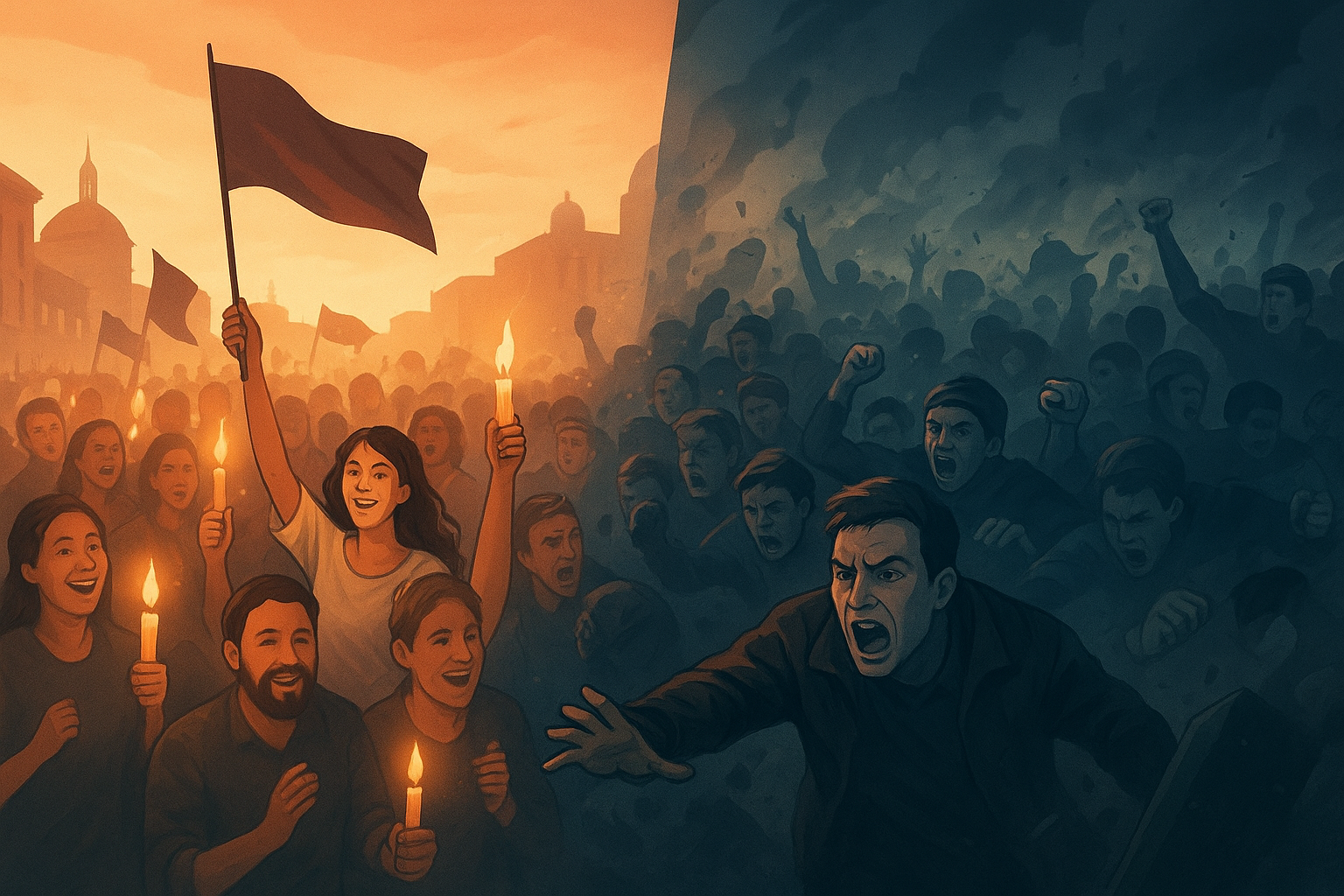Crowds are powerful. They can be joyous, dangerous, inspiring, or destructive. From stadium celebrations to sudden stampedes, from peaceful protests to violent riots, the behaviour of a crowd often surprises us because it defies the way individuals normally act alone. To truly understand this paradox, we need to look deeper into the psychology of crowds.
What Exactly is a Crowd?
A crowd is not just a collection of people standing together—it is a temporary social organism with its own mood, energy, and dynamics. Crowds may be:
- Casual – people gathered by chance, like at a bus stop.
- Conventional – audiences in theatres, rallies, or stadiums.
- Expressive – gatherings celebrating or mourning.
- Acting – groups taking direct action, which may turn into protests or riots.
In each case, the psychological shift from “I” to “we” is what makes crowd behaviour unique.
Why People Behave Differently in Crowds
French social psychologist Gustave Le Bon was among the first to argue that in crowds, individuals lose their sense of self and take on a “collective mind.” Later research expanded on this, pointing to several forces at play:
- Deindividuation: Anonymity makes people feel less accountable, leading to riskier actions.
- Emotional Contagion: Emotions—whether joy, anger, or fear—spread like wildfire in a crowd.
- Group Polarization: Shared ideas tend to grow more extreme when reinforced by others.
This explains why otherwise calm individuals might panic during a stampede or join aggressive behaviour during riots.
Stampedes: Panic in Motion
Stampedes are tragic examples of how fear overtakes reason. They usually happen during concerts, political rallies, religious pilgrimages, or sports events. Once panic begins, survival instincts dominate. People push, not out of malice, but because they feel they have no choice. Ironically, most deaths occur from suffocation due to crowd pressure, not from being trampled.
Proper crowd design—wide exits, controlled entry, and clear instructions—can save lives, but history shows these precautions are often neglected.
Riots and Unrest: When Crowds Turn Violent
Unlike stampedes, which are fuelled by fear, riots are driven by anger, injustice, and collective frustration. They often start with a trigger event—a rumour, an arrest, or a controversial incident—and escalate rapidly.
In riots, mob mentality takes over:
- Anonymity lowers fear of punishment.
- Unity creates courage, even in destructive acts.
- Absence of trusted authority leads to chaos.
While riots are destructive, they also highlight underlying grievances—economic inequality, political repression, or social injustice—that need addressing.
The Positive Side of Crowds
Crowds are not always dangerous. In fact, they are the driving force behind many of humanity’s greatest achievements:
- Social Movements: Civil rights marches, independence struggles, and climate rallies show how crowds can demand justice.
- Celebrations and Festivals: From World Cup parades to cultural festivals, crowds generate joy and unity.
- Healing Together: Vigils after tragedies provide comfort and resilience through collective mourning.
Crowds are a mirror—reflecting both the fragility and strength of human society.
Managing Crowds: The Key to Safety
Disasters in crowds are rarely due to individuals, but to poor planning and lack of psychological insight. Safer crowds require:
- Clear Communication: Calm, accurate information prevents rumours and panic.
- Smart Infrastructure: Well-designed exits, controlled pathways, and barriers reduce chaos.
- Understanding Emotions: Security and organizers trained in psychology can de-escalate tensions.
- Building Trust: When people trust authorities, they are more likely to remain calm.
Final Thoughts: The Double Edge of Collective Energy
Crowds amplify human behaviour. They can create beauty, solidarity, and change—or destruction, violence, and tragedy. Whether a gathering becomes a celebration or a crisis depends on leadership, planning, and the emotions fuelling it.
The psychology of crowds reminds us of one truth: when individuals merge into a collective, they gain power—but also face the danger of losing themselves. Harnessing that energy wisely is one of the greatest challenges of modern societies.

Leave a Reply